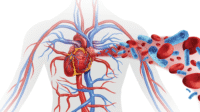Becoming a mother should be an exciting time, but for many birthing persons, it can be filled with excessive worry, stress, and anxiety. Imagine finding out you are pregnant and do not have stable housing, feel trapped in an abusive relationship, or struggle with a substance use disorder and have to choose between using a drug that may harm your unborn baby or having to endure excruciating withdrawal symptoms. For many moms, finding access to high-quality, respectful prenatal care can be challenging. Pregnancy and childbirth are often a birthing person’s first extended interaction in the healthcare system as an adult. As a result, pregnancy may reveal underlying chronic conditions such as hypertension, diabetes, and mental health disorders that often require chronic care management beyond the perinatal period. Navigating a complex healthcare system can be overwhelming for anyone, but especially for those who may have lower healthcare literacy and those from vulnerable populations who have a greater risk of experiencing healthcare bias and inequities.
Breaking down barriers to care
Patient navigation is an evidenced-based healthcare intervention designed to provide patient support and help break down individual barriers to care (Budde et al., 2022). Patient navigators and nurse navigators are used in a variety of healthcare settings. Oncology is one of the most studied settings for nurse navigation programs. It has shown improved patient out-comes, such as shortening time frames from screening to diagnosis and from diagnosis to treatment, and positively affecting a patient’s quality of life and the patient experience (Chan et al., 2023). Evidence also supports that patient navigation interventions can decrease healthcare costs. Navigators can have different backgrounds and education levels depending on the type of setting and services they provide (Budde et al., 2022). Advanced Practice Registered Nurses (APRNs) are well positioned to provide optimal patient support and navigation due to their education, experiences, knowledge, and understanding of the complex healthcare system. APRNs can bring a unique clinical perspective and skill set to patient navigation. As the landscape in women’s healthcare continues to evolve, nurse navigators may provide an opportunity to improve health disparities that persist in this population and influence health outcomes (McKenney et al., 2018).
Improving maternal outcomes
According to Healthy People 2030, social determinants of health (SDOG) are the conditions in the environments in which people are born, live, learn, work, play, worship, and age that affects a wide range of health, functioning, and quality-of-life outcomes and risk (Office of Disease Prevention and Health Promotion [ODSH], n.d., para. 1). Poverty, education, employment status, zip code, and racial discrimination are only a few of the social determinants that can have a significant impact on birthing outcomes and maternal health. According to data from the Maternal Mortality Review Committees (MMRCs), more than 80% of pregnancy-related deaths in 2017-2019 were preventable (Centers for Disease Control and Prevention [CDC], n.d.). Mental health conditions, including deaths related to suicide and overdose, were found to be the number one underlying cause of pregnancy-related deaths. Other causes included excessive bleeding, cardiac conditions, infection, blood clots, cardiomyopathy, and hypertensive disorders. Acknowledging that 80% of maternal deaths could have been prevented with the right intervention is eye-opening and a true call to action for anyone who works in healthcare and has interactions with pregnant and postpartum people or with people who could get pregnant in the future.
Postpartum support
Mothers or those who function in the maternal role for their family are often the backbone of their family’s health. They typically make the healthcare appointments, research conditions and possible treatments, try out home remedies, buy and prepare the food, and manage the family’s calendar. Since they often serve as caregivers to other family members, they may put their healthcare needs last. They may cancel appointments or avoid accessing care at all if they feel it is an inconvenience to their partner or family. The weeks following birth are critical to transitioning from pregnancy to long-term health and well-ness (American College of Obstetricians and Gynecologists [ACOG], 2018). The postpartum period can be a challenging and vulnerable time for new moms to balance their physical and mental well-being with the competing demands of a new baby. The postpartum period is a common time for complications to occur. According to data from 2017-2019, 53% of pregnancy-related deaths occurred between 7-365 days postpartum (Trost et al., 2022). Reframing the postpartum period as “The Fourth Trimester” is an approach to educate birthing people on the importance of continuing care during the postpartum period rather than ending care after birth. The goal is for patients to see their OB/GYN provider one to three weeks following birth and again six weeks postpartum. This provides additional opportunities for patients to be screened for perinatal mood and anxiety disorders (PMADs), sometimes referred to as “postpartum depression” or “baby blues.” It also provides opportunities for family planning, early intervention for potential complications, and referrals for transitioning to any chronic disease management that may be needed. Caring for the healthcare needs of a new mother and infant often requires an integrated healthcare approach, which is an ideal time for patients to access a nurse navigator or care coordination. Patients may need help identifying potential resources or accessing care with a new provider or community organization. Navigation support and care coordination services can decrease wait times to access care and break down barriers to care that might occur from a patient trying to identify and access these resources on their own (Hillemeier et al., 2014).
Future implications and recommendations
Nurse navigators embedded into the perinatal care setting may be a potential solution to decrease maternal mortality and pregnancy-related deaths in the United States. Patient navigation has been shown to improve patient outcomes in other healthcare settings, such as oncology. Future studies are needed to evaluate the effectiveness of healthcare navigation interventions, specifically in the perinatal population, and the effects on maternal and birth outcomes. Additionally, further evaluation of specific navigator roles and responsibilities in this population would be helpful for the future development of navigation programs and implementation guidelines. The healthcare system continues to become increasingly complex, making roles such as nurse navigators even more critical for optimizing patient outcomes and decreasing organizational and social barriers to care.
References
American College of Obstetricians and Gynecologists. (2018). ACOG committee opinion no. 736 summary: Optimizing postpartum care. Obstetrics & Gynecology, 131(5), 949–951. Retrieved January 30, 2024, from https://www.acog.org/clinical/clinical-guidance/committee-opinion/articles/2018/05/optimizing-postpartum-care
Budde, H., Williams, G., Scarpetti, G., Kroezen, M., & Maier, C. (2022). What are patient navigators and how can they improve integration of care? [Policy Brief, No. 44]. European Observatory on Health Systems and Policies. https://www.ncbi.nlm.nih.gov/books/NBK577643/
Centers for Disease Control and Prevention. (n.d.). Four in 5 pregnancy-related deaths in the U.S. are preventable [Press Release]. Retrieved January 24, 2024, from https://www.cdc.gov/media/releases/2022/p0919-pregnancy-related-deaths.html
Chan, R. J., Milch, V. E., Crawford‐Williams, F., Agbejule, O., Joseph, R., Johal, J., Dick, N., Wallen, M. P., Ratcliffe, J., Agarwal, A., Nekhlyudov, L., Tieu, M., Al‐Momani, M., Turnbull, S., Sathiaraj, R., Keefe, D., & Hart, N. H. (2023). Patient navigation across the cancer care continuum: An overview of systematic reviews and emerging literature. CA: A Cancer Journal for Clinicians, 73(6), 565–589. https://doi.org/10.3322/caac.21788
Hillemeier, M. M., Domino, M. E., Wells, R., Goyal, R. K., Kum, H. C., Cilenti, D., Timothy Whitmire, J., & Basu, A. (2014). Effects of maternity care coordination on pregnancy outcomes: Propensity-weighted analyses. Maternal and Child Health Journal, 19(1), 121–127. Retrieved January 30, 2024, from https://doi.org/10.1007/s10995-014-1502-3
McKenney, K. M., Martinez, N. G., & Yee, L. M. (2018). Patient navigation across the spectrum of women’s health care in the United States. American Journal of Obstetrics and Gynecology, 218(3), 280–286. https://doi.org/10.1016/j.ajog.2017.08.009
Office of Disease Prevention and Health Promotion. (n.d.). Social determinants of health [Healthy People 2030]. U.S. Department of Health and Human Services. Retrieved January 24, 2024, from https://health.gov/healthypeople/priority-areas/social-determinants-health
Trost, S., MPH, Beauregard, J., MPH, PhD, Chandra, G., MS, MBA, Njie, F., MPH, Berry, J., MPH, Harvey, A., BS, & Goodman, D. A., MS, PhD. (2022). Pregnancy-related deaths: Data from Maternal Mortality Review Committees in 36 US states, 2017-2019. Centers for Disease Control and Prevention. Retrieved January 24, 2024, from https://www.cdc.gov/reproductivehealth/maternal-mortality/erase-mm/data-mmrc.html





















